Plantae

Whitebark Pine
Pinus albicaulis

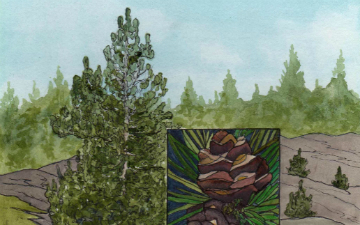
Sorry, there is no photo available. If you have one, please submit
here
.
2 POINTS
Fact: Pinus albicaulis may grow more than 20 meters in height if in favorable conditions
cold, cool
Graphic by Victoria Heryetvictoriaheryet.com/
Whitebark Pine A stand of Whitebark Pines Conservation status Vulnerable (IUCN 3.1)[1] Scientific classification Kingdom: Plantae Division: Pinophyta Class: Pinopsida Order: Pinales Family: Pinaceae Genus: Pinus Subgenus: Strobus Species: P. albicaulis Binomial name Pinus albicaulis Engelm. Pinus albicaulis, known commonly as Whitebark Pine, Pitch Pine, Scrub Pine, and Creeping Pine occurs in the mountains of […] read more

Salal
Gaultheria shallon


Sorry, there is no photo available. If you have one, please submit
here
.
1 POINT
Fact: Gaultheria shallon has edible berries and is also an important medicinal plant for Aboriginal peoples.
cold, cool, warm
Graphic by Kyle McQueenkylemcqueen.net/
Gaultheria shallon Scientific classification Kingdom: Plantae (unranked): Angiosperms (unranked): Eudicots (unranked): Asterids Order: Ericales Family: Ericaceae Genus: Gaultheria Species: G. shallon Description Gaultheria shallon is 0.2 to 5 m tall, sprawling to erect. Evergreen, its thick, tough, egg-shaped leaves are shiny and dark green on the upper surface, and rough and lighter green on the […] read more

Moss
Isothecium cristatum


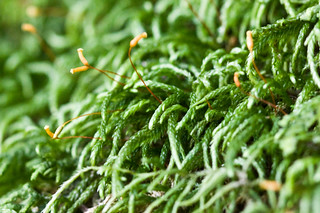
2 POINTS
Fact: Like other mosses, Isothecium cristatum does not have flowers and seeds, but reproduces using spores and spore capsules.
cold, cool, warm, hot
Graphic by Victoria Heryetvictoriaheryet.com/
Photo by Image by: Ken-ichiwww.flickr.com/photos/ken-ichi/
Moss “Muscinae” from Ernst Haeckel‘s Kunstformen der Natur, 1904 Scientific classification Kingdom: Plantae Division: Bryophyta Schimp. Classes [2] Takakiopsida Sphagnopsida Andreaeopsida Andreaeobryopsida Oedipodiopsida Polytrichopsida Tetraphidopsida Bryopsida Mosses are small, soft plants that are typically 1–10 cm (0.4–4 in) tall, though some species are much larger. They commonly grow close together in clumps or mats in damp […] read more

Common Liverwort
Marchantia polymorpha

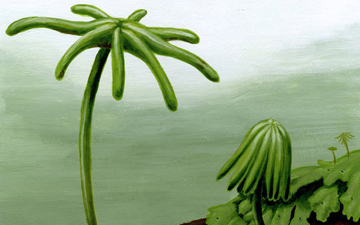
Sorry, there is no photo available. If you have one, please submit
here
.
2 POINTS
Marchantia polymorpha often rapidly colonizes burnt ground after fires
Cold, Cool, Warm, Hot
Graphic by Chelsea Cristwww.chelseacrist.com/
Marchantia polymorpha, sometimes known as the common liverwort or umbrella liverwort, is a large liverwort with a wide distribution around the world. It is variable in appearance and has several subspecies. It is dioecious, having separate male and female plants. It is a thallose liverwort which forms a rosette of flattened thalli with forked branches. […] read more

Aleppo Pine
Pinus halepensis


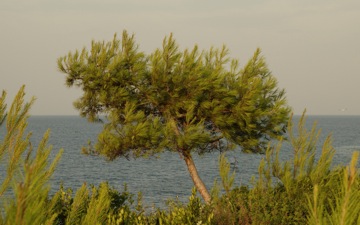
1 POINT
• Pinus halepensis has a SPREAD of 2
• Pinus halepensis is considered an invasive species in South Africa and Southern Australia.
Cool, Warm, Hot
Graphic by Christinakurodaiya.deviantart.com/
Photo by akk_ruswww.flickr.com/people/akras/
Pinus halepensis, commonly known as the Aleppo Pine, is a pine native to the Mediterranean region. Their range extends from Morocco and Spain north to southern France, Italy and Croatia, and east to Greece and northern Tunisia, and Libya, with an outlying population (from which it was first described) in Syria, Lebanon, southern Turkey, Jordan, […] read more

Unscented Dendrobium
Dendrobium anosmum

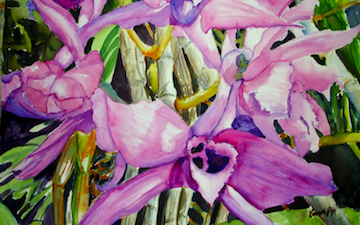

2 POINTS
• Dendrobium anosmum has a SPREAD of 2.
• Dendrobium anosmum is epiphytic: it grows on top of other plants.
Warm, Hot
Graphic by Pat Knorppp-e-a-k.deviantart.com/
Photo by Stemman, Sebastianwww.flora33.com/en/index.php
Dendrobium is a huge genus of orchids. It was established by Olof Swartz in 1799 and today contains about 1,200 species. The genus occurs in diverse habitats throughout much of south, east and southeast Asia, including the Philippines, Borneo, Australia, New Guinea, Solomon Islands and New Zealand. The name is from the Greek dendron (“tree”) and bios (“life”); it means “one who lives on trees”, or, essentially, […] read more